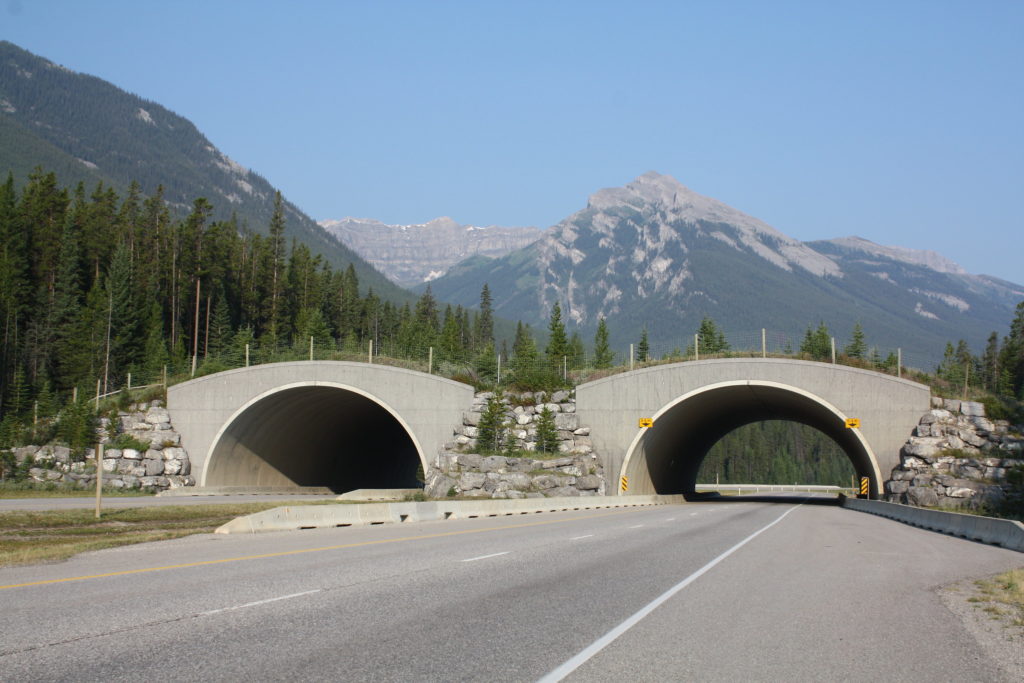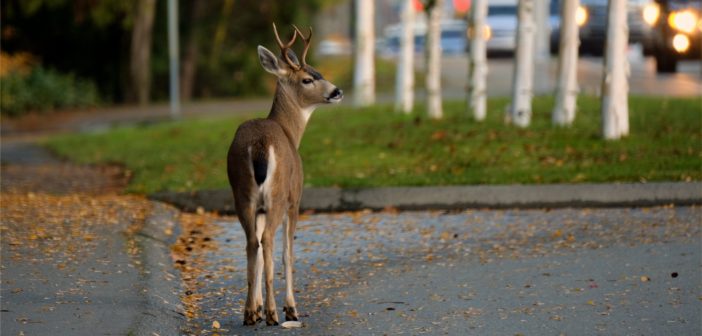Last December, while traveling on heavily congested Arlington Boulevard in Falls Church, Virginia, I noticed some kind of incident along the side of the road ahead of me. I figured it was another fender-bender during the evening rush hour, causing yet another bottleneck.
But it was much worse.
As my car inched closer, I saw in the headlights on the side of the road a downed buck thrashing about but unable to stand up. He had a large set of antlers and I thought how sad and tragic that this regal creature had met his untimely end in such a horrific yet banal fashion.
When I reflect on the scene, I think of the tremendous pain and fear that this deer must have felt and wonder how long he suffered before passing. Such a mighty animal brought to his end in such a grisly way aroused a huge sense of pity and despair within me. I tend to brood on scenarios of both animals and children suffering, and this scene gnawed at me for quite a while because the animal was so panicked.
As I pondered the awful occurrence, I became curious to know what transportation officials are doing to reduce the rate of cars killing wildlife. I was able to interview Bridget Donaldson, Associate Principal Research Scientist for the Virginia Transportation Research Council.
The Council is the research division of the Virginia Department of Transportation (VDOT). Donaldson is a sixteen-year VDOT veteran and holds a master’s in ecology and evolutionary biology from the University of Tennessee.

“Of the several research projects I work on at a time each year, there is typically at least one that evaluates wildlife crashes and mitigation to reduce them. I’ve had an interest in ecology and wildlife since I was very young, and that interest led me to specialize in topics that deal with connecting wildlife habitat across transportation corridors and keeping them off the roads,” she told me.
It turns out that the commonwealth doesn’t have a definite program to reduce crashes with wildlife; however, Donaldson is concluding a multi-year research project that is evaluating the effectiveness of adding wildlife fencing to existing underpasses.
She will soon be writing wildlife crossing and fencing guidelines to funnel wildlife travelers to highway underpasses so that VDOT can encourage this mitigation in more spots around the state. The guidelines are influenced by recent research from the department.
The researcher explained a study on Interstate 64 that has shown extremely promising results. It determined that the addition of fencing to two underpass sites between Charlottesville and Crozet reduced deer crashes by 92% and increased use of the underpasses by wildlife by up to 410%, according to Donaldson.
Other efforts to reduce the number of cars hitting wildlife include adding deer advisory messages to changeable message signs.
Donaldson calls these efforts cost-effective but is concerned that larger-scale follow-through on these tactics may be stymied by funding constraints. But at least the state government is aware and listening.
“Without VDOT champions of our research who trust our science-based recommendations, we wouldn’t be making the strides that we are with wildlife crash reduction,” she said.
Donaldson’s research was also used to inform legislative decisions on a bill passed into law earlier this year. The law, signed by Governor Northam in March, requires VDOT and two other agencies to develop a wildlife corridor action plan.

The plan, according to the Virginia General Assembly website, “shall identify wildlife corridors, defined as areas connecting fragmented wildlife habitats that are separated by human activities or infrastructure, and recommend wildlife crossing projects intended to promote driver safety and wildlife connectivity.” In addition, the law requires that effects on wildlife corridors are evaluated for new construction projects and that ways to reduce harm to wildlife are included in the projects’ design options.
When asked what the public can do to help reduce the amount of wildlife killed on Virginia’s roads besides driving more carefully, Donaldson says folks can advocate for animals by “attending public meetings for road projects in areas where they know there are problems with wildlife collisions and encouraging their localities to apply for funding for mitigation.”
Residents’ qualitative input is especially helpful in such cases because data on such collisions do not always exist, especially for wildlife other than deer. VDOT uses police report data when it devises safety recommendations, but, according to Donaldson, only about ten percent of deer crashes are accounted for in police reports. Most people don’t call the police when they hit a deer, she notes, and no state database captures statistics on crashes with smaller wildlife.
“The most rewarding aspect of my work on wildlife crash reduction is learning over the years how many people are grateful that VDOT is looking into these measures,” said Donaldson. She noted that the public also seems to appreciate that the department is actually acting on the recommendations of the research.
Finally, as I thought about the deer writhing in pain and fright on the side of Arlington Boulevard last December, I asked Donaldson what people should do if they are unfortunate enough to hit a wild animal with their car and the animal remains alive.
“The police should be called, who will contact animal control to deal with injured animals,” she said. “Injured wildlife are often taken to a wildlife rehab facility.”
I often wonder what happened to that unfortunate buck, knowing there was probably no hope for him whatsoever. It’s sad to think there are so many animals who have suffered similar fates. So many, so forgotten and so unassisted. Just one more way our species bulldozes all the other ones on our planet.
Please drive carefully out there and attempt to make sure that you operate your automobile in an animal-friendly manner. Thank you.
This article was originally posted on the Animal Matters blog.
Featured image: a young deer contemplates crossing a busy road. Image credit marneejill, CC BY-SA 2.0.





